LNG bunker terminal construction begins in Bilbao
-
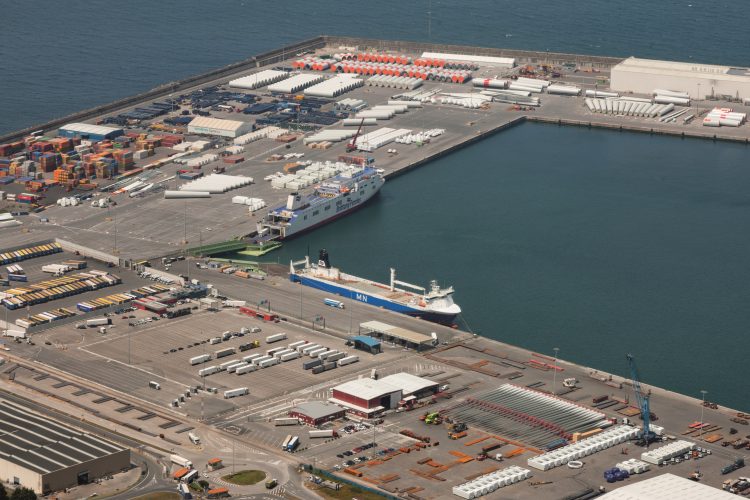 Bilbao ferry terminal
Bilbao ferry terminal
-
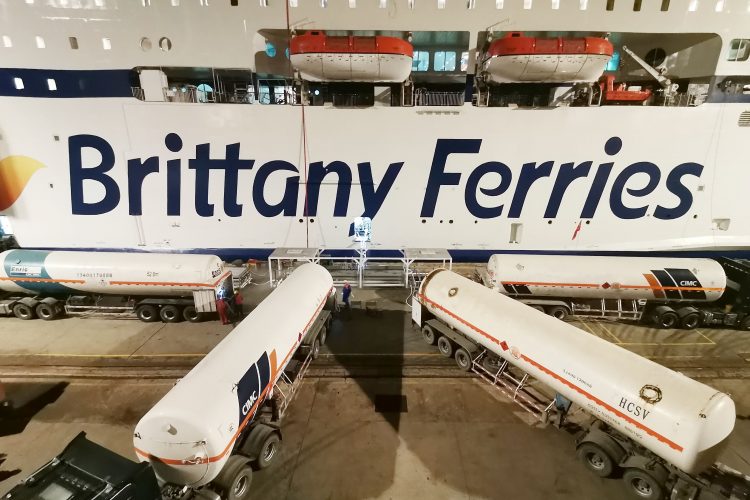 First LNG bunkering trial - Salamanca in shipyard (2)
First LNG bunkering trial - Salamanca in shipyard (2)
-
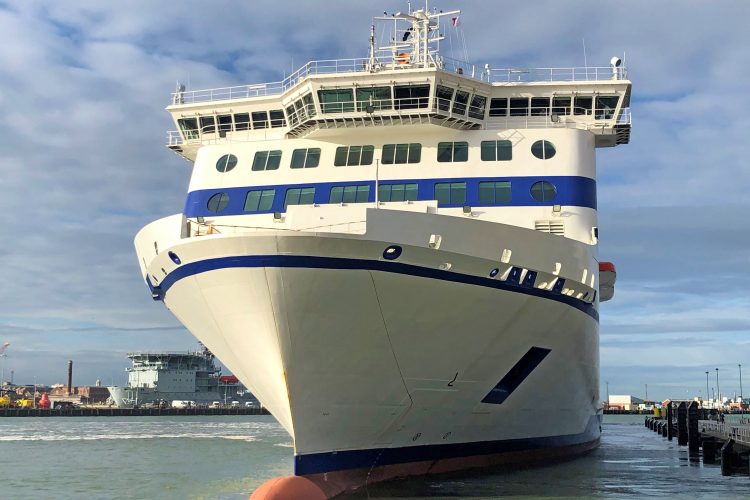 Salamanca -bow first at yard
Salamanca -bow first at yard
-
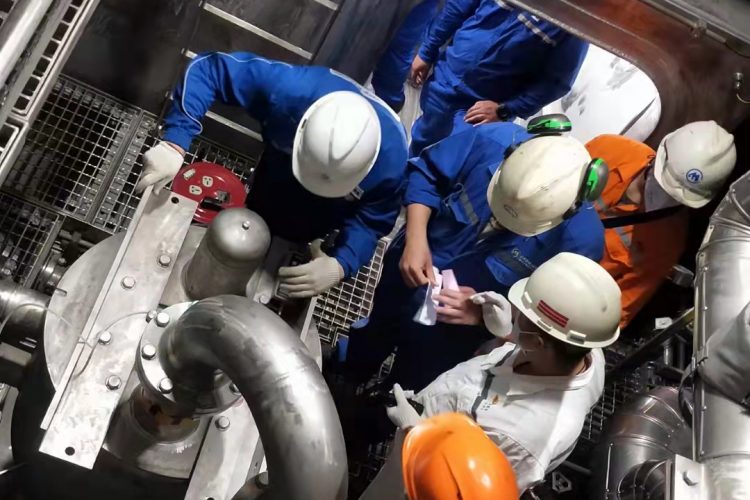 First LNG bunkering trial - Salamanca in shipyard
First LNG bunkering trial - Salamanca in shipyard
-
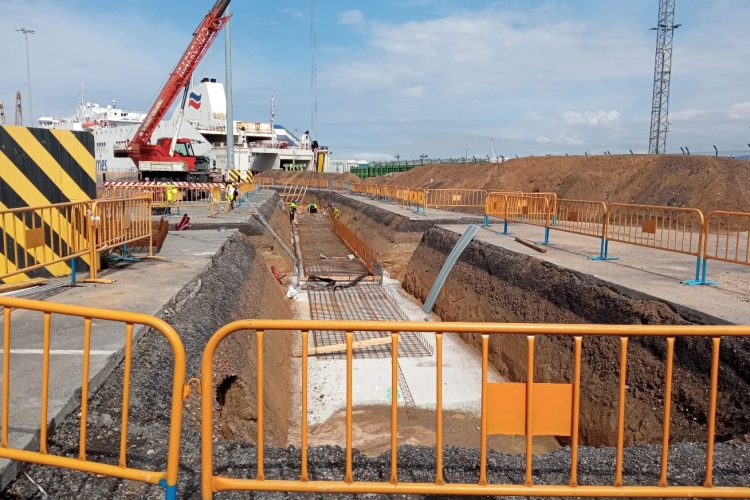 LNG bunker terminal - work begins in Bilbao
LNG bunker terminal - work begins in Bilbao
Brittany Ferries welcomes the start of construction of LNG bunker facilities in Bilbao. Fuel giant Repsol has confirmed the news which paves the way for the arrival of Brittany Ferries’ first LNG powered-ship Salamanca. Work on the bunker terminal be completed in the first half of next year, coinciding with the ship’s arrival.
Salamanca will serve UK-Spain routes and will be joined by a second LNG-powered vessel called Santoña arriving in 2023. A separate LNG bunker facility will be constructed by Repsol in Santander and preparatory work is already taking place.
Construction of the LNG bunker terminal in Bilbao represents an important milestone on Brittany Ferries’ journey towards fleet renewal and energy transition. It also reaffirms the long-term partnership between the French ferry firm and fuel supplier Repsol.
“This is welcome news and I applaud Repsol and our port partners in Bilbao for driving this forward,” said Christophe Mathieu Brittany Ferries CEO. “The move to cleaner, green fuels relies on an integrated approach that connects vehicles with fuel suppliers and other important partners like ports. We look forward to the completion of works in the months to come and to the arrival of our first LNG-powered ship.”
The Bilbao terminal will have a cryogenic tank with a storage capacity of 1,000m3, which permits the natural gas to be kept in a liquid state at -160°C. The flexible design of the terminal will allow it to service different vessels in the future, representing an important decarbonisation opportunity for port operations.
This project involves an investment of more than €10 million by Repsol. The Port Authority of Santander has already begun work on the second facility, on the quay where the bunker station will be located.
Both Spanish terminals are to be co-financed by the European Commission through the CEF- Connecting Europe Facilities Programme.
About LNG:
LNG is a fuel which almost eliminates emissions of air quality pollutants such as SOx, and soot particulates. It also significantly cuts NOx emissions while offering clear reductions in carbon dioxide emissions when compared with standard marine fuels.
Brittany Ferries sees LNG as the best interim energy solution, on the road to future zero-emissions fuels such as ammonia, hydrogen and biofuels. Ships like Salamanca and Santoña will help Brittany Ferries reduce its carbon footprint as it moves towards a 2050 deadline set by the International Maritime Organisation.
In addition to Salamanca and Santoña, the company has just announced the order of two further vessels. These will be LNG-hybrid ships, replacing two of the oldest vessels in the Brittany Ferries fleet. They will operate on the Channel connecting France with the UK arriving in 2024 and 2025.
As well as operating in battery-only mode when manoeuvring in port, the LNG-hybrids will be configured to plug-in to shoreside power – when this solution is offered in ports.
-Ends-
About Brittany Ferries
Brittany Ferries was born in 1972, starting operations as a freight-only service on 2nd January the following year. Since first links were forged between Brittany and Plymouth in the South West of England, the company has progressively launched, then strengthened its shipping routes. These are now relied upon by millions of passengers every year as well as by companies transporting goods by sea across the so-called Atlantic Arc (France, UK, Spain and Ireland). In addition to cutting congestion and emissions on busy roads, these motorways-of the sea have also helped enrich local communities, create jobs and develop economic growth while nurturing international tourism.
More details here: https://bit.ly/3kgA2Zs
Key figures (2020)
- Revenue: €202.4 million (€469 million in 2019)
- Fleet renewal: Four new vessels on the horizon, two powered by LNG entering service in 2022 and 2023; two LNG-hybrid powered ships arriving in the years that follow
- Employment: 2,474 employees, including 1,600 seafarers (full-time equivalent)
- Passengers: 752,102 in 2020 (2,498,354 in 2019)
- Freight: 160,377 in 2020 (201,554 in 2019)
- 12 vessels connecting France, the United Kingdom, Spain and Ireland, via 14 maritime routes
- 12 ports: Roscoff, Saint-Malo, Cherbourg, Caen, Le Havre, Plymouth, Portsmouth, Poole, Cork, Rosslare, Santander, Bilbao.
- Tourist impact: 231,000 unique visitors to France, generating 2.6 million overnight stays in 2020 (857,000 in 2019 with 8.7 million overnight stays in 2019)
Press contacts:
Nigel Wonnacott: [email protected]
Christopher Jones: [email protected]
 News
News